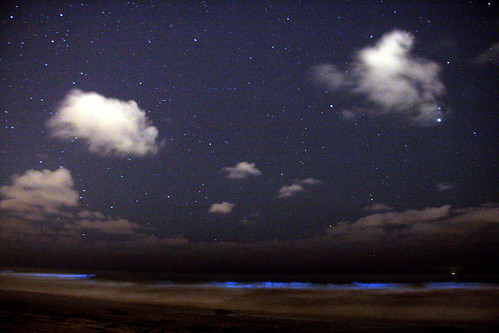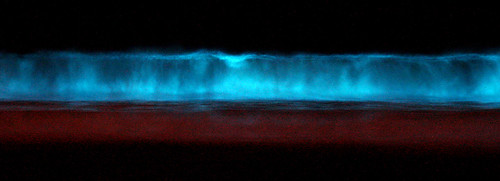This week (of June 2) my biology students will be reading a chapter on communities and ecosystems.
Here are a few selected facts from their readings, for your consideration:- "Each day, planet Earth receives about 10^19 kcal of solar energy." The textbook compares this amount of energy to the energy of 100 million atomic bombs. For your reference, one kcal is equal to 4184 joules.
- "Most of this energy is absorbed, scattered, or reflected by the atmosphere or by Earth's surface."
- " . . . only 1% is converted to chemical energy by photosynthesis."
- " . . . on a global scale this is enough to produce about 170 billion tons of organic material per year"
- "When energy flows as organic matter . . . much of it is lost at each link in (the) food chain."
- "The efficiencies of energy transfer (from one level of the food chain to the next) usually range from 5 to 20%. In other words, 80 to 95% of the energy . . . never transfers from (one level) to the next."
- "An important implication of this stepwise decline of energy in a trophic tructure is that the amount of energy available to top-level consumers (carnivores) is small compared with that available to lower-level consumers (herbivores)."
- This explains why "food chains are limited to three to five levels; there is simply not enough energy . . . to support another (level in the food chain)."
 For example:1,000,000 kcal of sunlight > 10,000 kcal of plant vegetation > 1,000 kcal of primary consumers > 100 kcal of secondary consumers > 10 kcal of tertiary consumers-
For example:1,000,000 kcal of sunlight > 10,000 kcal of plant vegetation > 1,000 kcal of primary consumers > 100 kcal of secondary consumers > 10 kcal of tertiary consumers- "Eating meat of any kind is an expensive luxury, both economically and environmentally."
- "Based on the rough estimate that 10% of the energy available in a trophic level (level of the food chain) is available at the next higher level up ... the human population has about ten times more energy available to it when people eat corn than when they process the same amount of energy of corn through another tropic level and eat corn-fed beef."
- "It is likely that as the human population expands, meat consumption will become even more of a luxury than it is today."
- Demand for meat drives up the prices of grains, fruits and vegetables because "potential supply of plants for direct consumption as food for humans is diminished by the use of agricultural land to grow feed for cattle, chickens and other meat sources."
And the pièce de résistance:
Boss Hog: America's top pork producer churns out a sea of waste that has destroyed rivers, killed millions of fish and generated one of the largest fines in EPA history.What do you think of this post format? It makes it much easier for me to share interesting facts & ideas that I'm thinking about on a short time budget, but it's no good if you guys find it unpleasant to read. If it's a hit, then let me know if there are any topics in biology you'd like me to cover.Textbook cited:
Biology: Concepts & Connections. 5ed. Campbell, Reece, Taylor & Simon.








